This piece is part of a series titled “Nonstate armed actors and illicit economies in 2022” from Brookings’s Initiative on Nonstate Armed Actors.
The last year saw advances and setbacks in the fight against American white supremacist, anti-government, and other violent right-wing groups. The good news is that the number of deaths from terrorism and other extreme forms of violence was low, but the bad news for 2022 is that violent rhetoric and threats are becoming normalized in everyday politics.
Let’s start with some good news. According to statistics from the New America Foundation, 2021 saw zero deaths in the United States from right-wing terrorist attacks. As discussed below, other forms of right-wing violence remained a problem, but there was no high-profile attack in 2021 like the 2018 Pittsburgh synagogue shooting or the 2019 El Paso Walmart attack, which killed 11 and 22 people respectively.
In a shift that will have positive long-term consequences, the Biden administration has made right-wing terrorism a priority. In June, the administration released a strategy for countering domestic terrorism, attempting to lay out both the different facets of the threat and how various security agencies should respond. The federal government has also launched an ambitious set of investigations, focusing on the January 6 insurrectionists and bringing hundreds of them to trial. Simply paying attention to the problem makes arrests and other forms of disruption more likely and scares many of those who might organize for violence, limiting their activities.
Although white supremacy and other right-wing extremist causes have many supporters, the groups themselves are disorganized, and the movement is riven by infighting. They disagree on which targets to prioritize and who should lead, and many of them are unskilled in clandestine operations, making them easy prey for law enforcement when it decides to focus on the problem. Perhaps most heartening, their violence usually backfires, decreasing public support and making it more likely that the government will crack down.
Yet a narrow focus on terrorism and other high-profile forms of violence against civilians misses much of the problem. In 2021, political violence and the threat of violence appeared increasingly common — even if terrorist attacks, narrowly defined, were not. The year began, of course, with an insurrection at the U.S. Capitol to prevent the certification of the election of Joe Biden as president.
Five people died in the fracas. Police officers killed Ashli Babbitt, whom many Trump supporters later portrayed as a martyr, as she was climbing though a broken window of a barricaded door that led to the Speaker’s Lobby, where police officers were evacuating members of Congress. The day after the insurrection, Capitol Police officer Brian Sicknick, whom rioters had assaulted and pepper sprayed, died of a stroke. Three others died from being trampled, a heart attack, and a stroke. Several officers who responded to the insurrection later killed themselves.
Dishearteningly, many Republican elected officials refused to join efforts to investigate the violence, playing down the danger and obscuring the facts. Threats of political violence continued in different incarnations, with Donald Trump supporters threatening election officials who certified votes for Biden and members of school boards that pushed for COVID-19-related restrictions also facing threats. These and similar causes have found many supporters, and they are often able to spread, and even amplify, their messages on social media, which often favors extreme right-wing content.
As these examples illustrate, much of the danger is in the relationship between mainstream American politics and its extremist edges: The Capitol insurrection involved small numbers of organized white supremacists and anti-government extremists, but also QAnon adherents and large numbers of ordinary Trump supporters. As extremism expert Seamus Hughes notes, “There was absolutely a spectrum of support. In many ways, Jan. 6 was a bug light. It brought extremists from all areas. And they all came with different skill sets.”
In the past, Presidents George H.W. Bush and Ronald Reagan denounced racist figures like Ku Klux Klan leader David Duke when they tried to enter mainstream politics. In contrast, President Trump often uses the rhetoric of the far right, supports or at least condones its anti-government protests, and has called on it to protect him in response to imaginary threats. Arizona Congressman Paul Gosar is an open advocate of white supremacist and other far-right fringe groups, and Republicans refused to join Democrats and condemn him even after he posted on social media a photoshopped anime video showing him killing liberal Representative Alexandria Ocasio-Cortez and attacking President Biden.
Not surprisingly, American politics have radicalized. According to one recent poll, 30% of Republicans agree with the statement, “Because things have gotten so far off track, true American patriots may have to resort to violence in order to save our country.” This figure is especially high among those who believe Trump’s false claim that President Biden and the Democrats stole the 2020 election.
Unfortunately, things may get worse before they get better. As the 2022 midterm elections approach, gerrymandering has encouraged both sides to play to their political bases, fueling extreme rhetoric and discouraging centrists who would criticize extremes within their own parties. A small number of individuals may find encouragement, conducting extreme acts of violence, while for larger numbers threats and violent rhetoric become normalized, making politics a dangerous (or at least miserable) business and creating the risk of a cycle of violence, where one violent act spawns another or a broader crackdown, further increasing radicalization.
The Biden administration and others concerned about the danger of right-wing terrorism should take several steps. The first is simply to continue prioritizing right-wing terrorism by resourcing the relevant intelligence and law enforcement agencies and continuing robust investigations into the January 6 insurrectionists and others who might use violence to undermine U.S. institutions. This will make it hard for the most violent individuals to organize to attack minorities, overthrow the government, or otherwise use violence.
In addition, the military and law enforcement must remain committed to civil rights and other democratic values. The efforts to better screen members of the military, begun by Defense Secretary Lloyd J. Austin III, should continue. Ideally, more would be done to ensure that local law enforcement is suitably screened and that any bad apples who slip through are promptly fired.
The most important step, but the one that for now appears least likely, is for politicians to openly shun those who embrace white supremacist ideas and violent conspiracy theories. Republican leaders did so in the past, helping reduce the spread of hateful ideas and their political influence. An open rejection would in turn change the media environment by marginalizing extreme voices, creating a benign circle that would create a safer America.
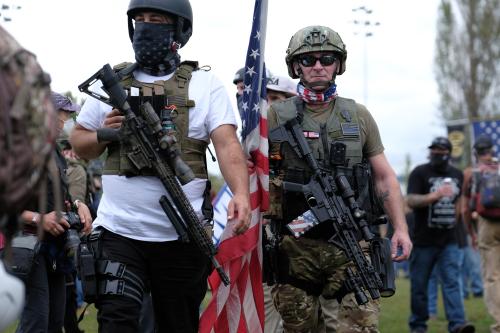
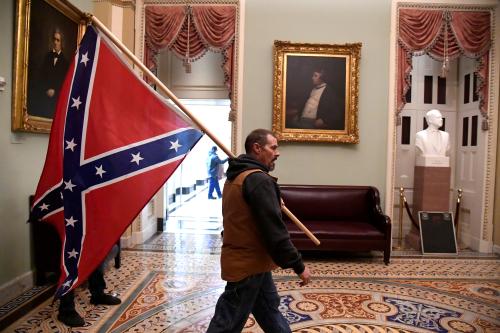
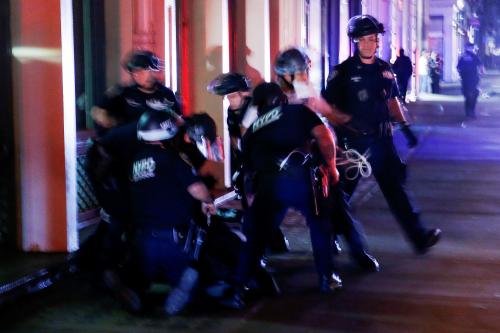
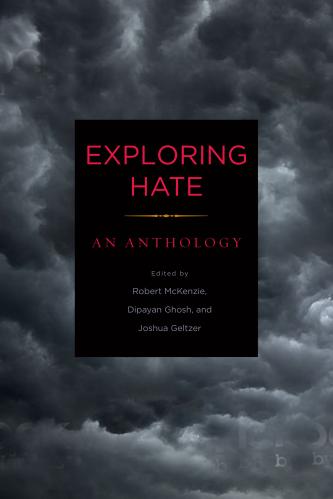

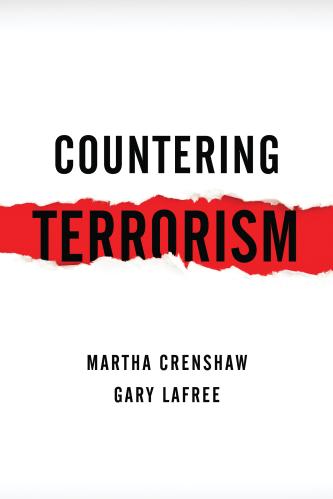

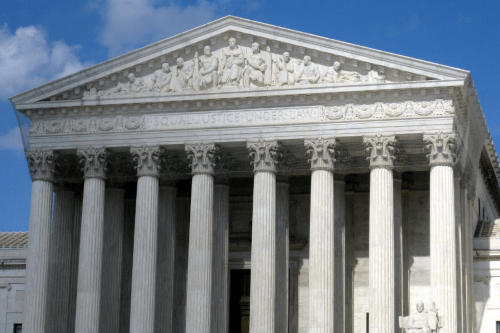

Commentary
Assessing the right-wing terror threat in the United States a year after the January 6 insurrection
January 5, 2022